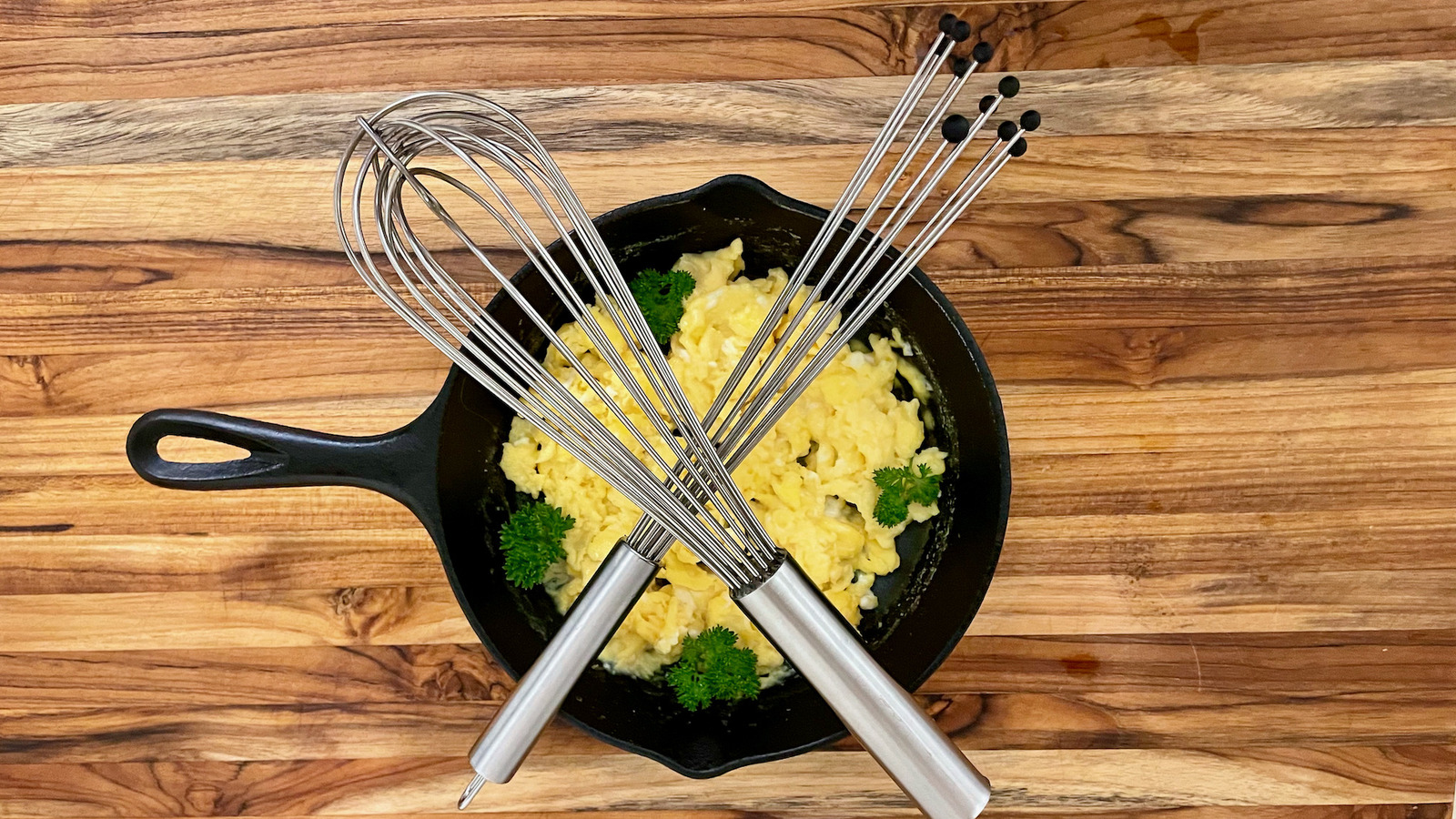Sure, you can scramble your eggs by bashing them around a bit with a fork, but if you’re making a lot at once (or just want a more ergonomic and efficient tool), a whisk is your best bet. But what type of whisk to use? There are well over a dozen varieties of whisks, each one with its own set of advantages and disadvantages.
I set out to test two of the most common styles of whisk (French and ball) and determine which one was best for scrambling eggs at home. As a former fine-dining cook with multiple stints on the breakfast shift — including a year manning the egg station at a luxury resort — I’ve scrambled more than a few eggs in my time. I did my best to scramble a batch of eggs with each whisk using identical procedures, then did a blind taste test to determine if the French or ball produced a superior end product. I also evaluated how easy each whisk was to use and how quickly it scrambled eggs to my satisfaction. The results of my experiment surprised me.
What is a French whisk?
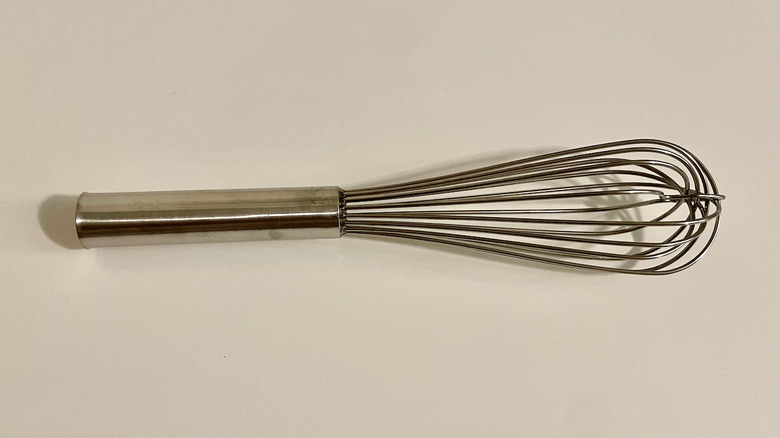
A French whisk is essentially a sturdier, narrower variant of an all-purpose balloon whisk. Balloon whisks are the generic whisks used for most common applications in the kitchen; they feature loops of thin wire overlapping to create a rounded shape. French whisks use the same basic design but are typically made with thicker wire and have a less bulbous end. Their slimmer form factor makes it easier for them to get into the nooks and crannies of saucepans than balloon whisks. This makes them ideal for mixing sauces and custards that need to be stirred thoroughly while on the heat to prevent them from burning.
Beyond their utility for sauces, there seems to be some disagreement about the best uses for French whisks. Some sources say that their heavy gauge wire makes them better for blending thick batters than the comparatively dainty balloon whisks. Others claim that, because the wires of a French whisk are closer together than a balloon whisk, they’re liable to get clogged if you use them to stir batters. The thick wires of a balloon whisk may aid in adding more air to eggs as they’re beaten, giving them a fluffier texture.
The Winco 12-inch stainless steel French whisk I chose for this test was quite stiff and heavy. It also featured an extra loop in one of the wires that locked the rest of the wires in place, giving it an extra-rigid structure and a slightly pointed end.
What is a ball whisk?
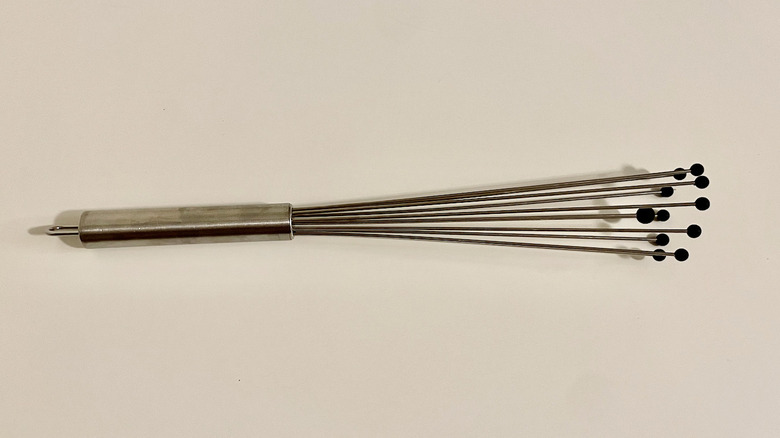
A ball whisk looks much less like a “normal” whisk than a French whisk does. Ball whisks consist of straight wires fanning out from a handle and terminating in small ball ends. Since the wires in ball whisks aren’t connected by loops at the end, they spread away from each other when pressed. This can be quite useful when mixing in a container with sharp corners, as the ends of the wires can reach into small spaces. The balls are often made from silicone, which means they’re safe to use with nonstick cookware (a typical uncoated metal French whisk is not). This means that they can be used to both beat scrambled eggs in a bowl and stir them in a nonstick skillet while they’re cooking.
In addition to working well in cramped containers and with nonstick cookware, ball whisks are great at mixing together dry ingredients. For example, they’re perfect for blending together the flour, salt, and leavening in a pancake or snickerdoodle crumb muffin recipe. Because of their open structure, they’re relatively easy to clean and won’t get clogged with trapped food like French whisks.
For my ball whisk, I selected a Mrs. Anderson’s Baking non-stick ball whisk with an angled tip. The slant of the end allowed it to be held at an ergonomic angle while mixing.
Methodology
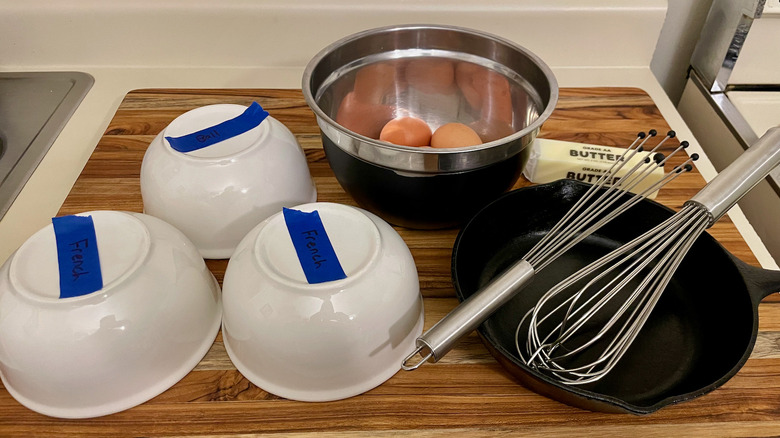
To give each whisk style a fair fight, I picked ones of the same length (12 inches) and general price point (under $20). I cooked two batches of our recipe for soft and fluffy scrambled eggs, one with each whisk. First, I beat the eggs and salt together with a whisk, and then I switched to a silicone spatula to stir them in the skillet. I whisked both batches of eggs one after the other in the same bowl for exactly one minute so I could test how thoroughly each one mixed. While whisking, I also evaluated the ergonomics and ease of use of each whisk. I cooked both batches one at a time in the same skillet at the same heat setting on my stove until they reached an identical stage of doneness, then transferred samples into bowls and did a blind taste test.
For the tasting, I did a classic triangle test. That means I used three samples: Two of one batch (in this case, the French whisk), and one of the other (the ball whisk). I had an associate mix up the samples so I didn’t know which was which, then tasted all three to see if I could identify the odd one out. After tasting, the secret identity of the samples was revealed to me, and I got to check if the type of whisk actually made a difference in the flavor or texture of the final product.
French whisk mix test
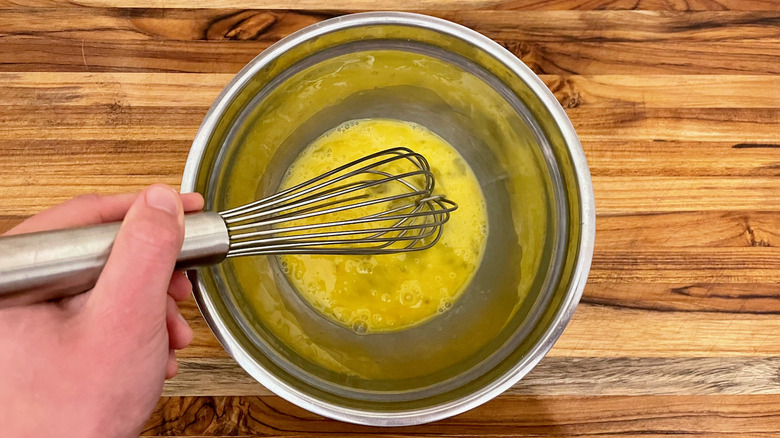
Crawford Smith/Look
Going into this experiment, I was confident the French whisk would win handily. In all my years in a professional kitchen, I had never seen anyone beat eggs with a ball whisk — balloon or French whisks only. The French whisk felt extremely sturdy in my hand. It seemed almost excessively heavy-duty for the job. The little point at the end of the Winco made quick work of the yolks, breaking them up almost instantly. However, while French whisks are known for getting into tight corners, this whisk’s rigidity made it challenging to scrape against the side of the bowl and thoroughly beat together all the egg whites and yolks. After a minute of whipping, there were still a couple of streaks of unincorporated white in my egg mixture.
Overall, the rigidity and weight of the French whisk made it feel a bit clunky to use for beating one serving’s worth of eggs. It wasn’t the most comfortable tool in my hand. However, if I were scrambling a large batch of eggs for a big crowd, the French whisk would be my choice — since it was so sturdy, it seemed like it would do just as well whipping three dozen eggs at a time as it did three.
Ball whisk mix test
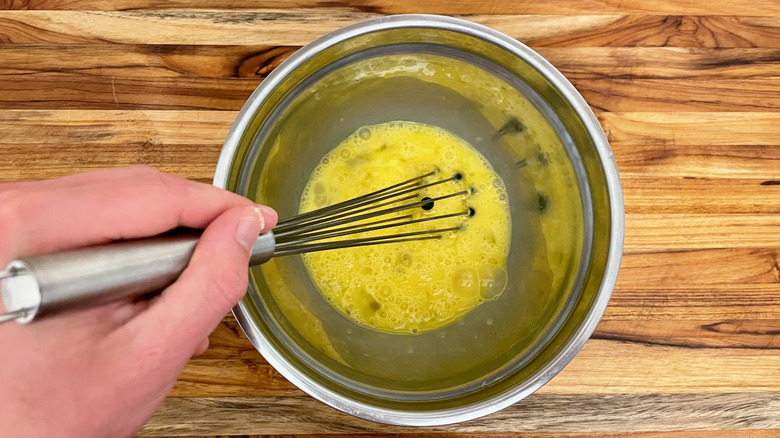
The ball whisk was much lighter and more flexible than the French one. It felt more comfortable to use, and the slant of the tip positioned the handle at the perfect angle for my hand and wrist. For the first few seconds of mixing, it struggled to burst the egg yolks — they tended to get trapped between the tines of the whisk. However, once the yolks popped, the ball whisk did a quicker and more thorough mixing job than the French one. The ball-tipped wires scraped the sides of the bowl as I mixed, ensuring that not a single strand of egg white was left behind.
By the end of a minute of whisking, the egg mixture was completely uniform. It also looked more aerated than the French whisk mixture, with a noticeable layer of air bubbles on top. Overall, it worked better for a single-serving batch of eggs than the French whisk. However, its wires were so light and bendy that it seemed like it would have more difficulty with a big batch.
Scrambled eggs taste test
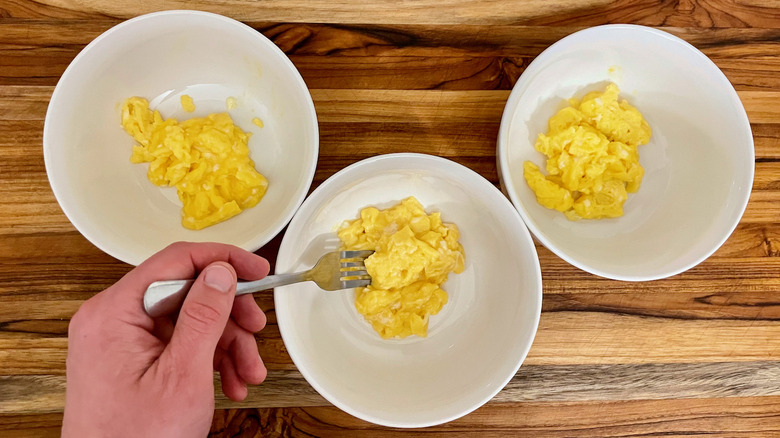
I cooked the French whisk batch first, wiped out the pan, and then cooked the ball whisk batch using the identical procedure. Once I had created my three samples, I let them all cool down to room temperature so the ball whisk wouldn’t get an unfair advantage from being hotter and fresher. I then covered my eyes while someone mixed up the samples so I wouldn’t know which was which.
The differences between the ball whisk and French whisk eggs were extremely subtle — both produced excellent scrambled eggs. If I wasn’t focusing my whole mind on the taste test, there’s no way I’d notice that the three samples came from two different batches of eggs. However, ultimately, I was able to figure out which sample was from the ball whisk batch. The telltale sign was that its curds were slightly lighter due to the added air, while the French whisk eggs were slightly denser and heavier. I liked the ball whisk eggs more, but which one you’d favor depends on your own preferences for scrambled egg texture.
Final verdict: Which whisk is best for scrambled eggs?
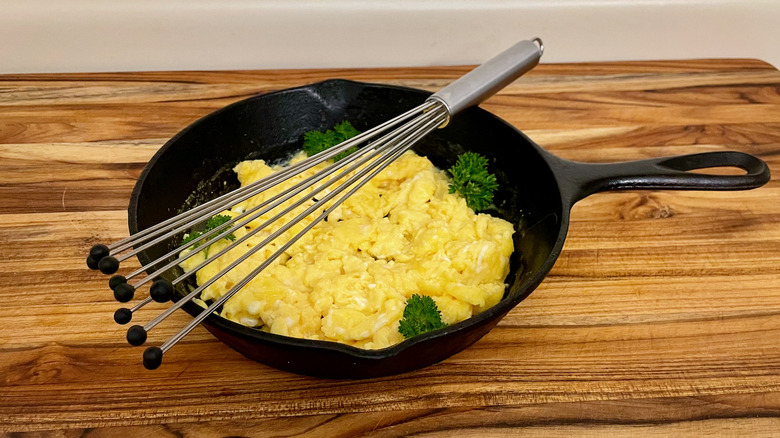
While I hesitate to issue a blanket recommendation since egg tastes are so personal, for my purposes when cooking at home, the ball whisk was just a bit better for scrambling eggs. It was more comfortable to use, mixed the eggs together a bit faster, and made fluffier scrambled eggs. It was also easier to clean after I was done mixing.
That said, if I were stocking a kitchen with tools and wanted to buy just one all-purpose whisk, I’d still pick a French whisk over a ball whisk. In my opinion, a French whisk will work better for many jobs, including whipping meringues, vinaigrettes, sauces, custards, and batters. It’s just a more versatile tool than a ball whisk. Likewise, if I had a big family and was regularly scrambling a dozen-plus eggs, I’d probably go with the sturdy French whisk instead of the relatively flimsy ball whisk. However, I was pleasantly surprised by the ball whisk, and it’ll be my go-to for whipping up eggs and making omelets in the future.



